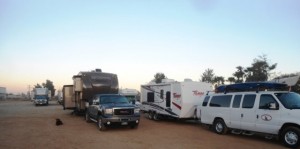
April 8, 2014 – Here we sit at the Oak Creek RV Resort in El Cajun reflecting on another successful season for Baja Amigos RV Caravan Tours although our new Wagonmasters, Dom & Diane, will not be across the US border with their group until April 10th. To date we have operated 23 tours in five (5) short years, wow where did all that time go? This season we brought over 40 RVs down to Baja.

We said goodbye to our gang of all Canadians about 10:30 am this morning as traffic was light and the lineup short, perhaps a 20 minute wait. This time when we were sent into the secondary Agriculture inspection they just asked a few questions and we were sent on our way, that certainly made for a quicker border stop.

The last couple of days on the tour went well, light traffic on the Sunday for the very long drive from Bahia de los Angeles to Vicente Guerrero, a little busier of course on the last leg thru the urban areas. Everyone got their WiFi fix at the Baja Fiesta restaurant, and a couple of very hot showers, before our dinner. Many were up early for breakfast, served up early by Cecelia, Ivan and Abi for 7am precisely. Then we were on our way to the Valley of Guadalupe and a Wine Tour & Tasting at LA Cetto. Darrel’s favourite policeman was nowhere to be seen in Maneadero, no surprise there. We got settled in at Sordo Mudo, arriving about 12:30 pm. At 2:30 pm we headed over to LA Cetto and Ana, someone we had not met before, hosted the tour and tasting, she did a great job, the gang was impressed with both the tour and wine tasting.

Following the Winery visit we headed back to the RV Park and a Happy Hour (extending from the wine tasting). We watched a video produced by Darrel and all reminisced about their great time on Baja. This group made it a real pleasure for us, always nice to end our season on such a positive note.

Did you know?
El Cajon; Spanish:[elkaˈxon]) is a city in San Diego County, California. Nestled in a valley surrounded by mountains, the city has acquired the nickname of “The Big Box”. Its name originated similarly, from the Spanish phrase “el cajón”, which means “the big box” or “the drawer.” During Spanish rule (1769–1821), the government encouraged settlement of territory now known as California by the establishment of large land grants called ranchos, from which the English word ranch is derived. Land grants were made to the Roman Catholic Church which set up numerous missions throughout the region. In the early nineteenth century, mission padres’ search for pasture land led them to the El Cajon Valley. Surrounding foothills served as a barrier to straying cattle and a watershed to gather the sparse rainfall. For years the pasture lands of El Cajon supported the cattle herds of the mission and its native Indian converts.

It was not until the Mexican era (1821–1846) that titles to plots of land were granted to individuals. The original intent of the 1834 secularization legislation was to have church property divided among the former mission Indians. However, most of the grants were actually made to rich “Californios” of Spanish background who had long been casting envious eyes on the vast holdings of the Roman Catholic missions. In 1845 California Governor Pio Pico confiscated the lands of Mission San Diego de Alcala. He granted eleven square leagues (about 48,800 acres, 197 km2) of the El Cajon Valley to Dona Maria Antonio Estudillo, daughter of José Antonio Estudillo, alcalde of San Diego, to repay a $500 government obligation. The grant was originally called Rancho Santa Monica and encompassed present day El Cajon, Bostonia, Santee, Lakeside, Flinn Springs, and the eastern part of La Mesa. It also contained the 28-acre (0.11 km2) Rancho Cañada de los Coches grant. Maria Estudillo was the wife of Don Miguel Pedrorena (1808–1850), a native of Madrid, Spain, who had come to California from Peru in 1838 to operate a trading business.

With the cession of California to the United States following the Mexican-American War, the 1848 Treaty of Guadalupe Hidalgo provided that the land grants would be honored. As required by the Land Act of 1851, a claim for Rancho El Cajon was filed by Thomas W. Sutherland, guardian of Pedrorena’s heirs (his son, Miguel, and his three daughters, Victoria, Ysabel and Elenain) with the Public Land Commission in 1852, confirmed by the U.S. Supreme Court, and the grant was patented in 1876. In 1868, Los Angeles land developer Isaac Lankershim bought the bulk of the Pedrorena’s Rancho El Cajon holdings and employed Major Levi Chase, a former Union Army officer, as his agent. Chase received from Lankershim 7,624 acres (30.9 km2) known as the Chase Ranch. Lankershim hired Amaziah Lord Knox (1833–1918), a New Englander whom he had met in San Francisco, to manage Rancho El Cajon. In 1876, Knox established a hotel there to serve the growing number of people traveling between San Diego and Julian, where gold had been discovered in 1869. Room and board for a guest and horse cost $1 a night. The area became known as Knox’s Corners and was later renamed. By 1878 there were 25 families living in the valley and a portion of the hotel lobby became the valley post office with Knox as the first postmaster.


El Cajon was incorporated as a city in 1912. A portion of the western boundary of the city follows the eastern boundary of a similar land grant, made under Spanish law (prior to Mexican independence) to the Mission San Diego de Alcala.


